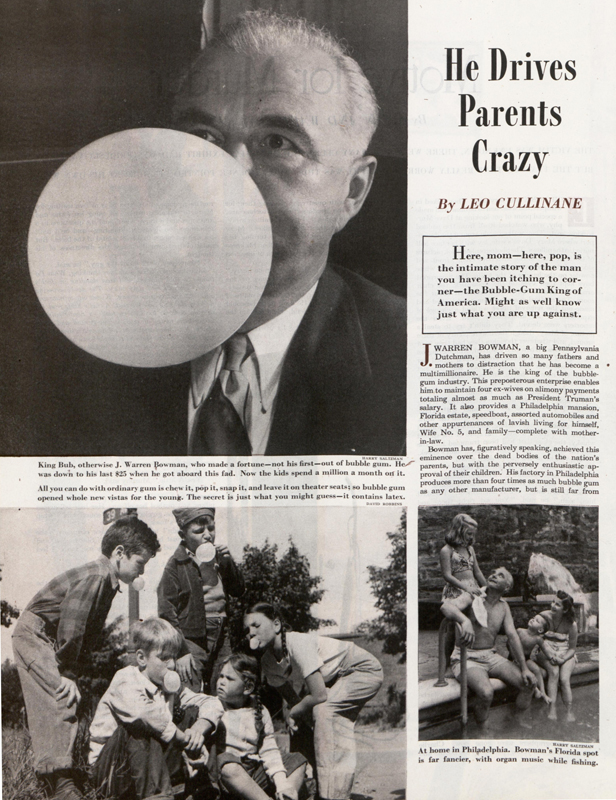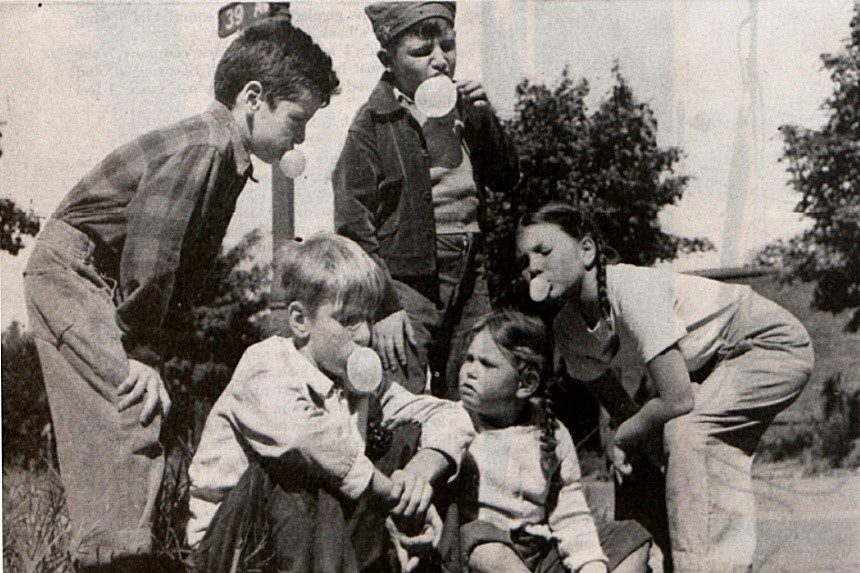In November of 1947, the Post reported on a phenomenon that had become the scourge of parents everywhere. No, it wasn’t juvenile delinquency, drugs, or comic books. The menace was bubble gum, which stuck to places where you didn’t want it to be stuck and made your children look like cud-chewing cows. It was a pink peril.
But this peril made one man very, very rich. In their November 1, 1947, issue, in an article by Leo Cullinane called “He Drives Parents Crazy,” The Saturday Evening Post shares the story of the man they called the Bubble-Gum King of America.
That year, J. Warren Bowman was selling over $1 million of bubble gum a month, the equivalent of $13 million in today’s dollars.
Bowman’s road to success was hard-fought and circuitous. At one point, he had $25 to his name. But the man had a nose for capitalism.
He started his career as a used car salesman and also did stints as a police officer, limo driver, fruit hauler, a coffee shop owner. After a chance meeting with a gum salesman, he got into the gum selling business himself. Bowman was always looking for the next big thing, and he decided that the thing was gum. He convinced a small factory to start manufacturing chewing gum under the brand names Tri-Mint and Ju-ce-kiss, took a short detour into a failed pinball business, then decided to return to the sticky stuff.
But boring old chewing gum wasn’t going to cut it. Bowman borrowed $300 and some used equipment, and started making bubble gum. He sold it under various brand names including By Gum, Blony, and Bub, but the real key to his success came in 1937, when he started including “Horrors of War” illustration cards with each piece. The cards featured gruesome scenes from the Chinese-Japanese War, Spanish Civil War, and Ethiopian War. The kids called it “War Gum.”
By that year, Bowman sold 60 percent of the bubble gum in the U.S., and it wasn’t just popular with the kids:
The pernicious bubble-gum habit is even sneaking into the adult world. At least three members of Congress are known to be surreptitious gum bubblers, and the House restaurant keeps a supply of Bowman’s product hidden on a lower shelf.
Following the success of “Horrors of War,” Bowman branched out into sports trading cards, which he started selling in 1939. When this article was published, he had halted the trading card business due to war-related shortages, but it would restart – and flourish – a year later. The operation was bought by Topps in 1956.
Despite parents’ concerns, Bowman and his gum had become a fixture of mid-century childhood. As the article concludes, “Parents may as well face it: King Bub is here to stay.”

Subscribe to the magazine for more art, inspiring stories, fiction, humor, and features from our archives.
Become a Saturday Evening Post member and enjoy unlimited access. Subscribe now




Comments
Chewing gum was brought to The United States by President Santa Anna, recently deposed (for the third time) leader of Mexico. The man who founded Chiclets, Thomas Adams, saw Santa Anna chewing on Chicle which was something south American Natives did a lot, for centuries. He added flavor and started the chewing gum industry.
https://en.wikipedia.org/wiki/Chicle